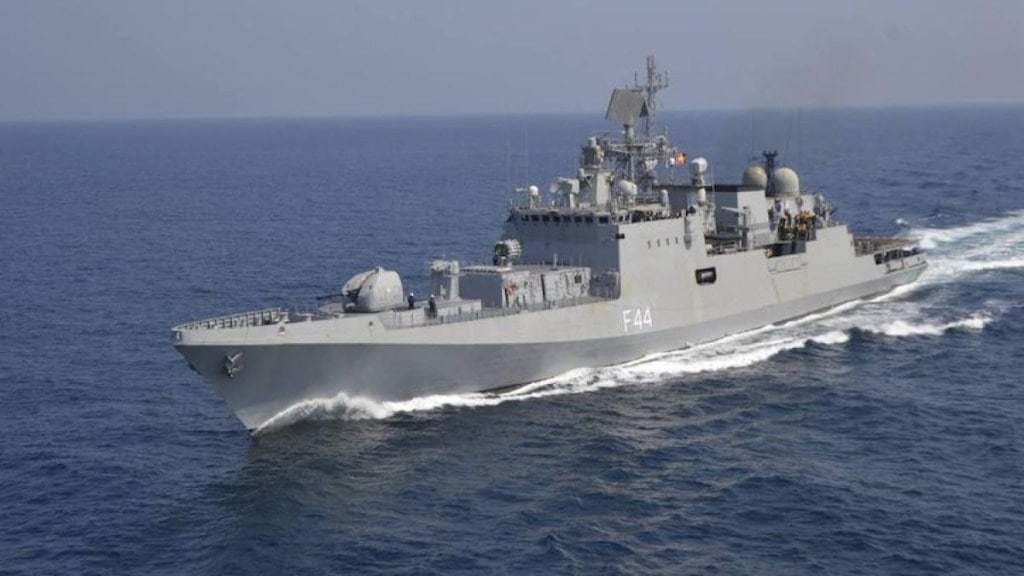India and Russia are set to further consolidate their defence and strategic ties with significant events scheduled in the coming months. Russian President Vladimir Putin has received an official invitation from Indian Prime Minister Narendra Modi to visit India, with the trip slated for early 2025. Kremlin Aide Yury Ushakov confirmed the visit, noting that the leaders of both countries have agreed to hold meetings annually. The dates for Putin’s visit will be finalized early next year, providing an opportunity for further bilateral discussions on defence, trade, and geopolitical matters.
In the lead-up to Putin’s visit, Indian Defence Minister Rajnath Singh is heading to Moscow from December 8 to 10, 2024. During this three-day visit, Singh will oversee the induction of the Russian-built frigate, INS Tushil, into the Indian Navy. This is a landmark event, marking the first time in a decade that India will induct a warship built in Russia. The induction of INS Tushil signifies a continuation of India’s longstanding defence relationship with Russia and adds a new chapter to India’s naval modernization.
INS Tushil: A Key Addition to the Indian Navy
INS Tushil is a state-of-the-art, multi-role frigate that will bolster India’s maritime capabilities. The ship is part of a broader defence deal signed between India and Russia in 2018 for the acquisition of four Grigorovich-class frigates. The warship is equipped with advanced systems, including BrahMos supersonic cruise missiles, which will enhance India’s ability to undertake a variety of naval missions. The induction of INS Tushil will take place in December, during Rajnath Singh’s Moscow visit, and will be a major milestone in India-Russia defence cooperation.
According to Admiral Dinesh Kumar Tripathi, Chief of the Indian Navy, INS Tushil is fully ready for induction into the fleet. “Tushil is fully ready; we are waiting for it to join the Navy,” he remarked during an annual press briefing in New Delhi ahead of Navy Day. The ship will join a growing fleet of Russian-built warships in India’s naval arsenal, complementing existing ships such as the Talwar-class and Teg-class frigates.
Also Read: INS Tushil set for December commissioning; Boost for defence ties with Russia
The second frigate, INS Tamal, is expected to join the Indian Navy by 2025, following similar construction at Russia’s Kaliningrad Shipyard. These frigates will complement India’s existing fleet of Russian-built warships, such as the Talwar-class and Teg-class, further enhancing the country’s naval defence capabilities.
Changing Dynamics: Russia’s Role in India’s Defence Strategy
While Russia has traditionally been a major supplier of defence equipment to India, its share in India’s military imports has been shrinking in recent years. A decade ago, about 70% of India’s foreign weapons came from Russia. Today, that number has dropped to around 40%, mainly due to the ongoing Ukraine conflict, which has hampered Russia’s defence production. Despite these challenges, India continues to rely on Russian military technology, particularly in areas such as air defence. However, deliveries of the S-400 air defence systems, which India contracted with Russia in 2018, are now delayed, with two of the squadrons expected only by 2026.
In addition to the delay in defence system deliveries, India is also waiting for the lease of a nuclear-powered attack submarine from Russia. The delivery of this submarine is now projected for 2028, further complicating India’s defence procurement efforts. Nevertheless, India remains committed to expanding its indigenous defence capabilities, with ongoing projects such as the LCA Tejas fighter aircraft and plans to build nuclear-powered submarines within the country.
Refitting INS Vikramaditya: Enhancing India’s Naval Strength
Another significant development in India’s naval defence strategy is the ongoing refit of the INS Vikramaditya aircraft carrier, purchased from Russia in 2013. India’s Ministry of Defence has signed a Rs 1,207 crore contract with Cochin Shipyard for the refit and dry-docking of the Vikramaditya. This will upgrade the carrier’s combat capabilities, ensuring its place as a critical asset in India’s naval fleet. After the refit, INS Vikramaditya will continue to serve as a vital part of India’s naval deterrent, reinforcing the country’s maritime security.
In addition to the Vikramaditya, India continues to focus on the development of its indigenous aircraft carrier, INS Vikrant, which was inducted into the Navy in 2022. While the Vikrant is operational, the need for additional fighter jets to be deployed on the carrier remains pressing. The acquisition of Rafale-M jets from France is under advanced negotiation and is expected to be finalized next month, further bolstering India’s naval strike capabilities.
Strategic Milestones Ahead
India’s defence relationship with Russia continues to evolve, with significant developments on both the ground and in the air. Rajnath Singh’s upcoming visit to Moscow will play a pivotal role in furthering this partnership, especially as the induction of INS Tushil marks a major milestone in India’s naval modernization efforts.
Both nations have faced challenges in recent years, particularly with Russia’s defence production capacity being affected by the Ukraine war. However, India’s commitment to enhancing its self-reliance in defence technology remains strong, with ongoing efforts in the development of indigenous platforms such as the LCA Tejas and the Arighaat-class nuclear-powered submarines.
